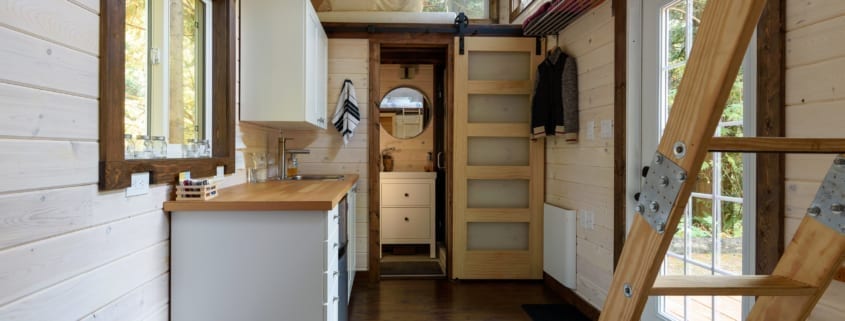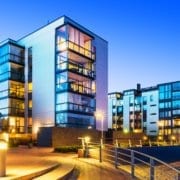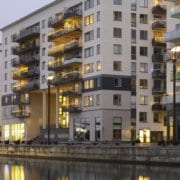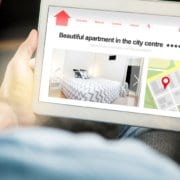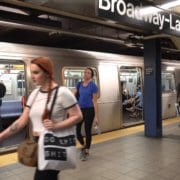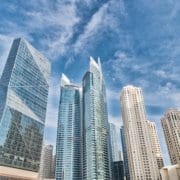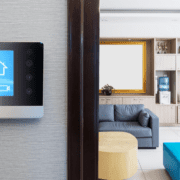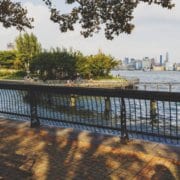9 Ways Commercial Real Estate Developers are Turning Small Spaces into Big Revenue
Recent years have seen commercial real estate owners getting a little more creative when it comes to finding additional monetization opportunities for their existing properties. Raising rents, charging for additional parking spots, and passing utility costs on to the tenant are examples of common ways to increase profit of a property. But continue reading to learn about some of the more uncommon and unique ways smaller spaces in high-density areas are being used to maximize revenue or to generate additional profit.
Micro-apartments
How do you repurpose a small building or plot of land that isn’t big enough for a traditional multifamily project? What do you do in a dense urban area location that is experiencing demand for more housing? The answer is micro-apartments. Micro-apartments enable more units to fit into less space. Micro-apartments are smaller than the average studio unit and are intended for a single occupant. The footprint falls between 200 and 400 square feet and offers space-saving efficient designs that include a kitchen and bathrooms. Oftentimes, they have high-ceilings and large windows to give the illusion of space. Micro-condos are even starting to pop up in places like Austin.
Micro-hospitals
Healthcare is a hotly debated topic in the United States nowadays. One thing that can’t be disputed, though, is the number of aging American citizens and their need for accessible healthcare facilities. As Baby Boomers continue to migrate to city centers and urban areas, health care is following. Micro-hospitals are essentially full-service hospitals on a smaller scale. They are 35k-45k square feet and two or three stories tall. These facilities provide emergency care, inpatient care, and some surgical procedures, as well as labor and delivery services.
Micro-retail
Micro-retail is being used by businesses to establish a presence in high-rent areas. Small spaces reduce overhead for retailers and allow property owners to generate extra revenue off of odd space that previously was not viable. Businesses like coffee shops and walk-up window fast-food and desserts are increasingly more common in pedestrian-friendly areas. As cities and urban areas become more walkable, the drive-thru experience is being recreated with the pedestrian in mind.
Pop-up retail
Pop-up retail is a trend catching on across the country, backfilling vacant space with short-term lease opportunities. A brand will open a store front for anywhere from a day to a few months. The most frequently-seen and successful example of this are holiday-specific stores. Halloween shops, which generally lease space from August to November, are the most common type of pop-up retail establishments, often taking over mall spaces left empty by electronics, furniture, and other large retailers. Last year, Spirit Halloween Stores, one of the largest pop-up retailers in the country, operated more than 900 US locations.
Signage and billboards
If a property is adjacent to high-traffic areas, selling advertising rights is a viable money making opportunity. Property owners in prime locations can demand shares of revenue in exchange for the rights to erect and maintain signage for a set period of time. While some may be worried about tarnishing the look and feel of a property, others are taking the opportunity to create unique and interesting advertisements that actually enhance urban streetscapes.
Markets
Undeveloped land or vacant warehouse space can be rented and used for farmers markets or pop-up festivals, with vendors coming together to create a marketplace. This strategy capitalizes on the “buy local” trend by providing local small business owners with the space to showcase and sell their goods. Pulling together a group of small players in the local economy creates a greater destination for consumers. Overhead for the business owners is low, and the property owners capitalize on non-traditional occupancy.
Bike storage facilities
Another strategy is to open a bike-transit center. Companies like Bikestation have helped land owners create bike storage facilities near public transit facilities in a number of cities. They offer a more secure bicycle parking option, repair facilities and services, and showers for cyclists on their way to the office.
ATMs
Rent out a few square feet to a bank, and allow them to set up an automated teller machine (ATM). There is also the option to franchise an ATM. Investing in an ATM franchise in high-traffic areas can lead to big returns over time, although the risk is certainly a lot higher.
Parking spaces
Small plots of land in urban areas make for great parking lots. Parking demand follows economic development. Parking lots are a great way to piggy back off the new office, retail, or hotel projects in the area. Upkeep and overhead are low, and a single parking spot can generate hundreds of dollars a month.
As time goes by and the market continues to tighten, commercial real estate owners will need to find more progressive and creative ways to stay profitable. Thinking outside the box is a great way to stay ahead of the competition.

